Reopening economy 'will have a much smaller-than-expected impact,' experts argue
As states begin to reopen their economies amid the coronavirus pandemic, some experts are arguing that it won’t do much to alleviate the effects of the economic shock from the virus.
In a working paper for the National Bureau of Economic Research (NBER), Christopher M. Meissner and Peter Zhixian Lin, economists from the department of economics at UC Davis, found that lifting stay-at-home orders may not make much of a difference in terms of economic effects.
“If the disease is still out there and people perceive it to be dangerous to go out, they will not go out,” the co-authors told Yahoo Finance in an email. “Also, the rest of the world is in recession, too, and the ‘re-opening’ will have a much smaller than expected impact.”
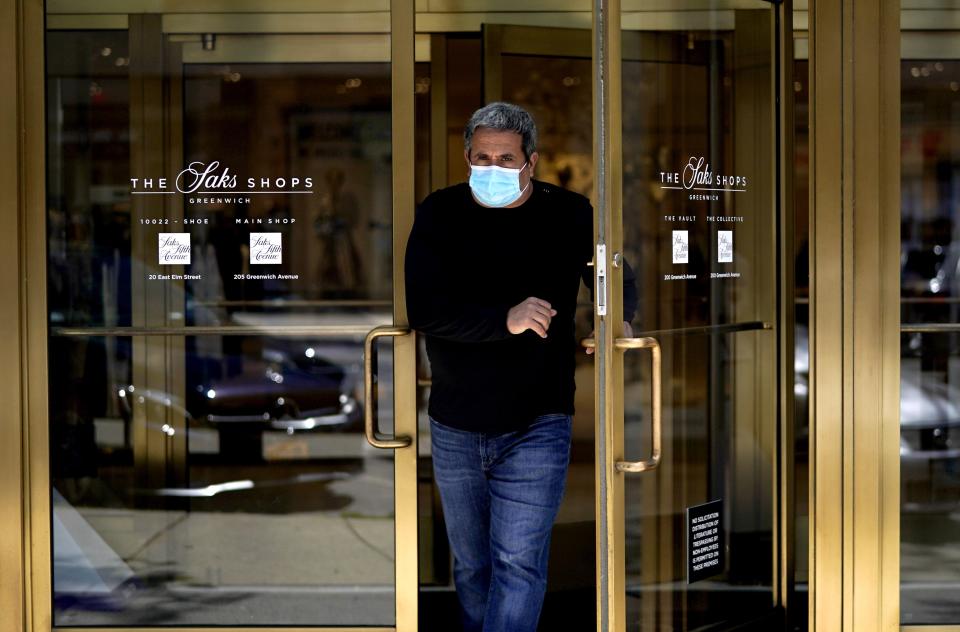
Every U.S. state is amid some form of reopening their economies. In states like Georgia and Texas, shelter-in-place orders have expired and the respective governors have reopened businesses as a means for stopping further havoc on the states’ economies.
The NBER paper had three main findings: the stay-at-home orders were likely effective in slowing the spread of the virus, but not in decreasing the rate of cumulative mortality; these orders may have impacted other jurisdictions; and that “there’s little evidence that [these orders] are associated with larger declines in local economic activity than in places without” them.
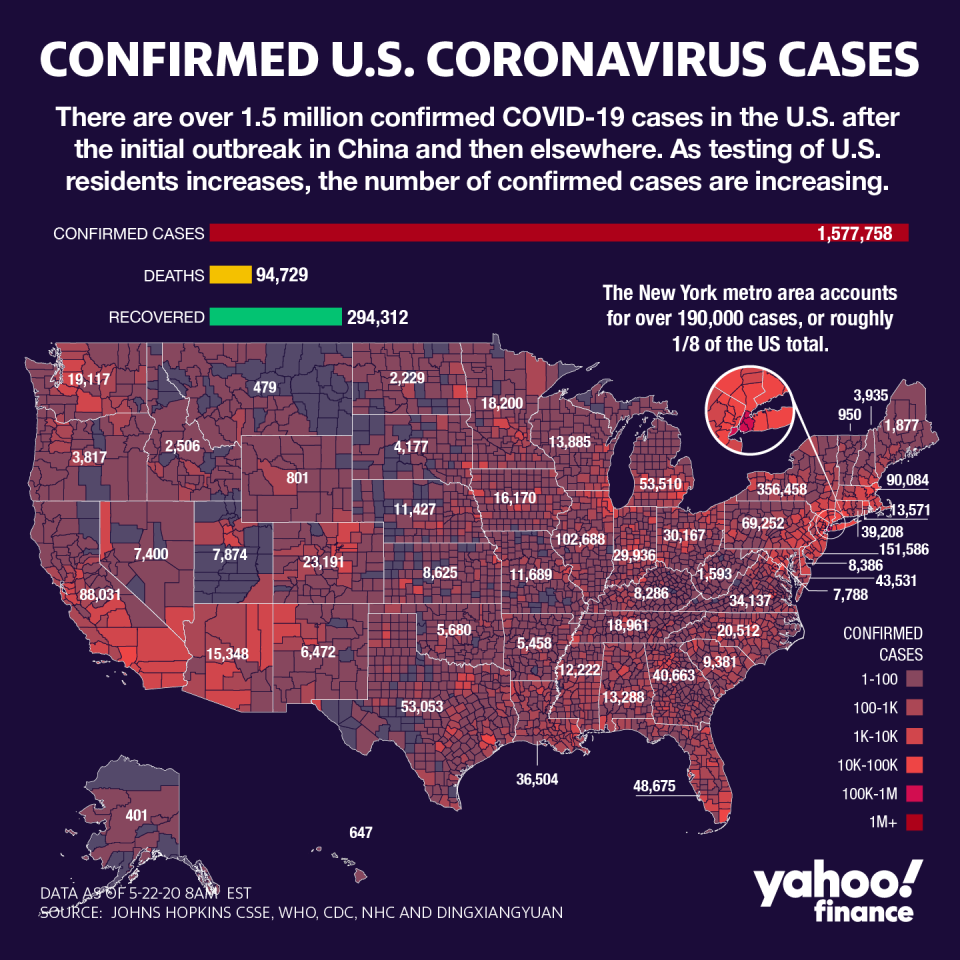
‘The negative economic shocks were national and not local’
When the coronavirus pandemic first began making waves through the U.S., all but eight states shut down and implemented stay-at-home orders.
This led to an unprecedented number of layoffs and furloughs across the country. Many politicians, including President Trump, pushed for states to begin reopening their economies in order to boost employment numbers and rejuvenate economic activity.
But according to the NBER research, jobless claims rose at the same rate in states with stay-at-home policies as in states without them.
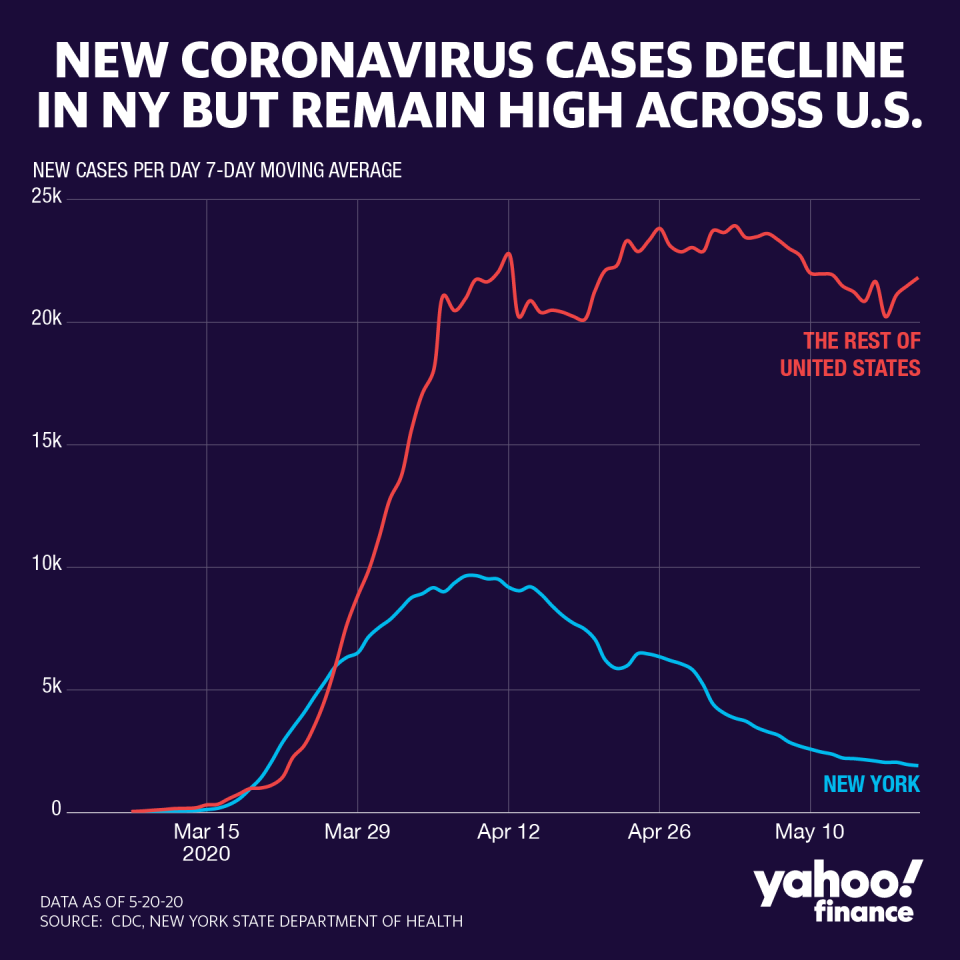
“Based on this, there is no evidence that stay-at-home policies led to stronger rises in jobless claims,” Meissner and Zhixian Lin wrote.
The authors noted that their results parallel data from the Spanish influenza back in 1918 to 1919 — U.S. cities that applied more of these measures “did not suffer greater economic misfortune” than other cities without the policies.
“We interpret this as evidence that the negative economic shocks were national and not local,” the two said.
A note from Capital Economics, corroborates this view, stating that there are few signs of people returning to work even as states begin reopening.
“Although the number of new jobless claims continues to ease – dropping to 2,438,000 last week from 2,687,000 the week before – the sharp rise in continuing claims the week before illustrates that the easing of lockdowns in many states has not yet resulted in any large-scale recall to work for those currently on temporary layoff,” the note said.
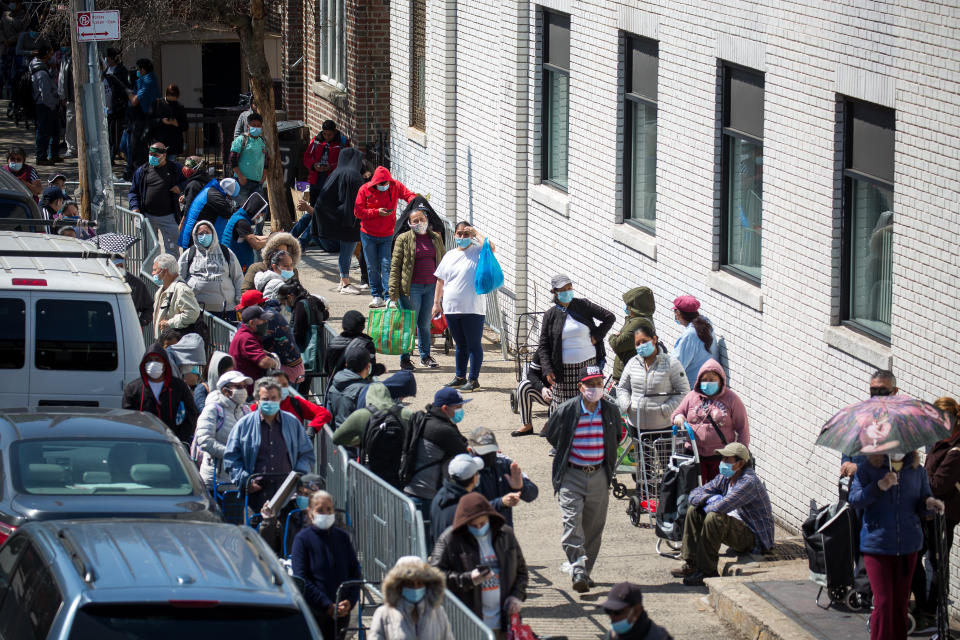
Recoveries are still slow
Furthermore, according to Moody’s Analytics economist Maria Cosma, reopening is not that simple.
“States and regions lifting lockdown orders will not be enough to get the economy roaring up to speed again,” she told Yahoo Finance. “Businesses large and small are filing for bankruptcy or closing.”
Cosma noted that the demand side has also been hit hard because of the financial circumstances that many Americans are finding themselves in.
“Just because businesses will be allowed to open doesn’t mean that customers will flock back like before,” she said. “With so many layoffs and reduced working hours, American consumers are in rough shape and pulling back on spending.”
Research from Goldman Sachs has indicated that in Georgia, Texas, Colorado, and Tennessee — four states that reopened earlier than most others — the economic recovery has been on the slower side.
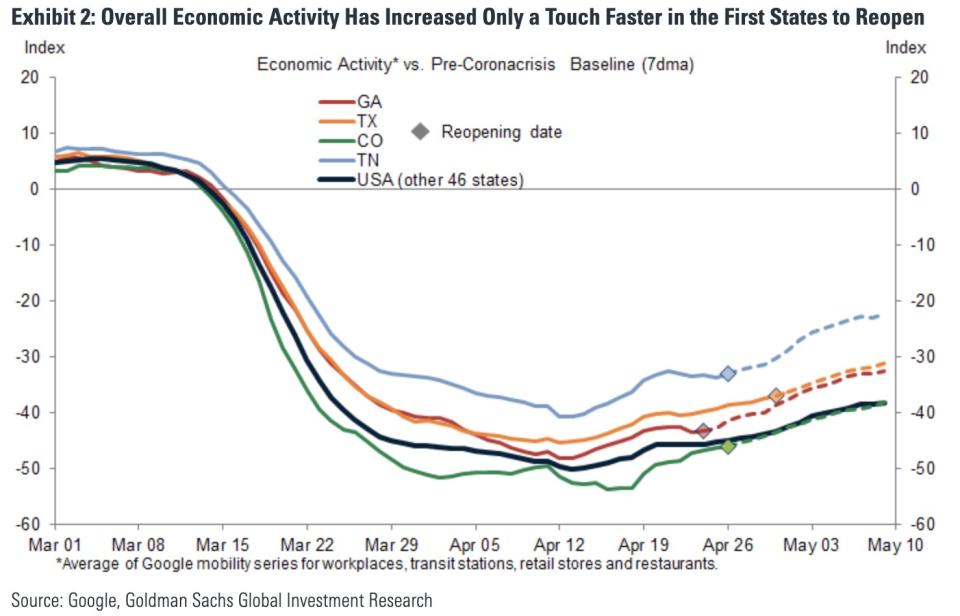
According to Cosma, it’s still unclear as to whether or not an aggressive reopening will spur a rapid recovery.
“Some states are pushing for a quick removal of lockdown restrictions, risking another wave of COVID-19 infections, in the hopes that this will juice up their economies,” she said. “But we aren’t seeing a significant spike in activity in these states. For example, initial claims are falling, but not much faster than in states that are still in more stringent lockdowns.”
In her research for Moody’s, Cosma found that this was the case particularly for Georgia.
“Weekly initials have been declining in Georgia, but they are still among the highest in the country as a share of the labor force, and the decline is not that significant compared with other states still in lockdowns,” she said. “Like many other states, the stay-at-home orders initially led to a spike in layoffs. However, over time, layoffs remained elevated due to reduced demand. U.S. retail sales in April and March show that consumers shifted their spending to necessities like groceries and medicine, and cut back on everything else. Georgia was not immune to this.”
There are over 1.5 million coronavirus cases in the U.S. so far, and that number is projected to triple by the end of 2020 if states reopen too soon.
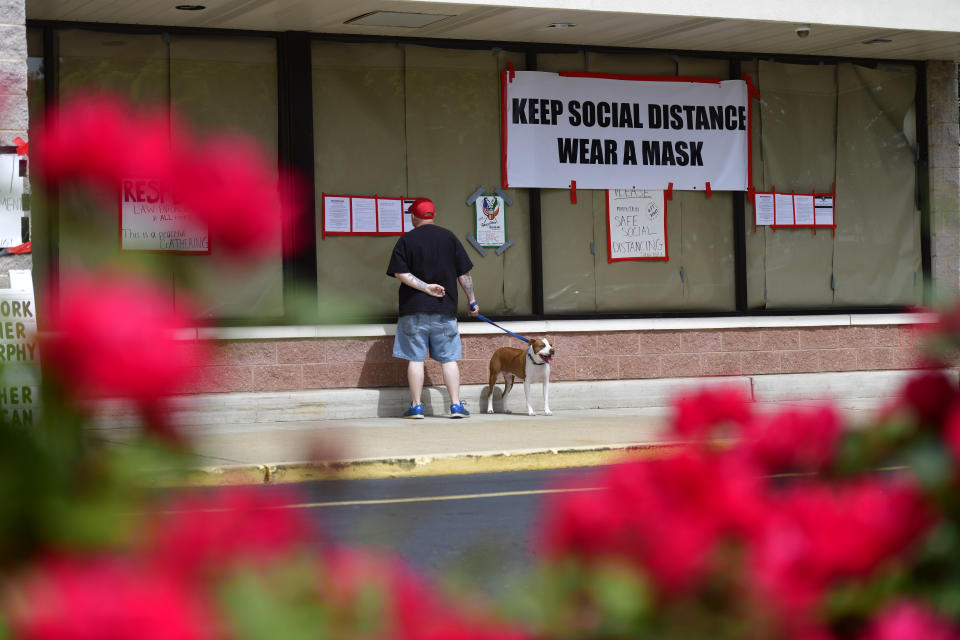
A vaccine is ‘the only ultimate solution’
While reopening states certainly doesn’t hurt their individual economies, the activity will likely be sluggish until there is a permanent solution to the virus, like a vaccine, according to Cosma.
“Reopening will boost state economies by lifting some supply-side shocks and unleashing a bit of pent-up demand,” she said. But, “until consumers are fully comfortable leaving their homes, resuming their usual errands and spending habits, demand will be soft. In all, this means that the economic recovery will not mirror the suddenness of the contraction. It will be more gradual, and it will very much depend on the epidemiological trajectory of the virus.”
Cosma continued: “A vaccine or other viable medical treatment is the only ultimate solution. In the meantime, states and the federal government need to do everything in their power to limit, or at the very least, control the spread of the virus. Fiscal stimulus will be very important, too. A key lesson of the financial crisis was that a robust and sustained policy response is critical to forestall an even more severe downturn.”
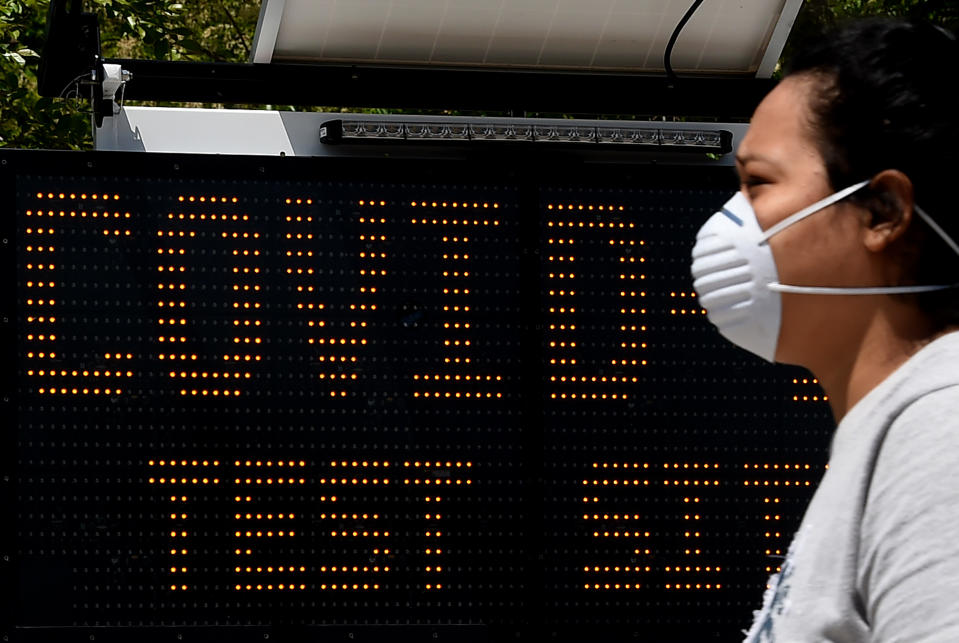
The race for a coronavirus vaccine is still ongoing, and one likely won’t be available until at least 2021. Until then, public health officials have stated that individuals will need to continue practicing social distancing and wearing face masks in order to protect the health of themselves and those around them.
“In the end, the nation as a whole will have to come to a reckoning,” Meissner and Zhixian Lin said. “How much are we willing to pay as a nation either in foregone economic activity or in human health to move on with our lives and get back to normal?”
Adriana is a reporter and editor for Yahoo Finance. Follow her on Twitter @adrianambells.
READ MORE:
Hospitals itch to ramp up elective surgery amid coronavirus profit crunch
Coronavirus and the U.S. health insurance system is 'a recipe for disaster'
Krawcheck: 'I'm very concerned' about how women emerge from the coronavirus pandemic
Read the latest financial and business news from Yahoo Finance
Follow Yahoo Finance on Twitter, Facebook, Instagram, Flipboard, SmartNews, LinkedIn, YouTube, & reddit.



